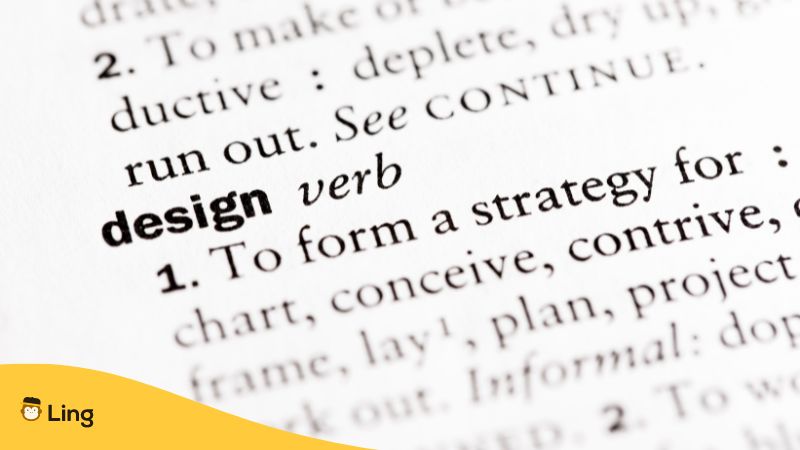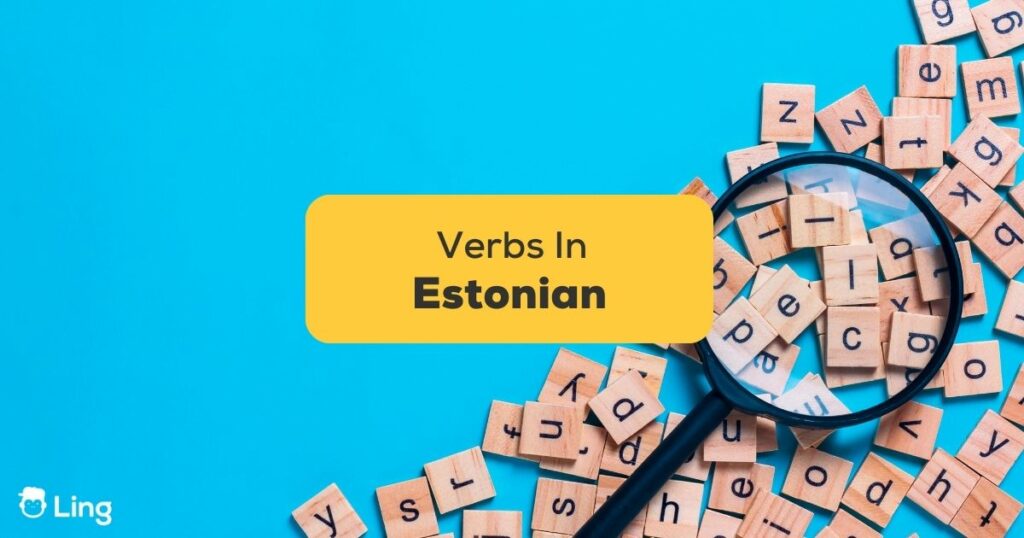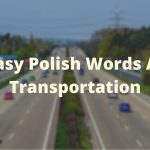The soul of the Estonian language finds its pulse in its verbs. Serving as the dynamic force and voice behind every expression, they create the foundational framework vital for breathing life into dialogues.
While they echo the nuances of verbs from different tongues, Estonian verbs stand distinct with their singular traits, morphological variations, and subtle complexities. Let’s get to know more about this Estonian grammar point in this article! Ready to immerse yourself in learning the Estonian language? Let’s begin!
What Are Estonian Verbs?
The Estonian language, characterized by its sophisticated phonetic qualities and distinctive linguistic attributes, beckons scholars and enthusiasts with its comprehensive Estonian grammatical framework. For those who plan to get to know this language deeply, verbs, or as termed in Estonian, “tegusõna,” serve as the foundational pillars. You may find Estonian hard to learn at first, but starting with the verb tegusõna, it will become very easy.
In the realm of linguistics, verbs universally act as catalysts, advancing narratives and encapsulating our myriad actions and sentiments. In the context of Estonian, however, their role is further magnified. A “tegusõna” transcends its conventional function of denoting action, occurrence, or state; it operates as the structural and semiotic nexus of Estonian sentence constructs.
It would be apt to liken Estonian verbs to esteemed conductors orchestrating a symphonic ensemble. They delineate the trajectory, set the thematic undertones, and frequently offer predictive insights into subsequent sequences.
The inherent sophistication of “tegusõna” manifests in its capacity to undergo metamorphoses based on the subject (be it mina (I), sina (you), or nad (they)) and the temporal context of the action (spanning the present, the past, or the future).

Verb Tenses In Bosnian
One of the intriguing elements of the Estonian language revolves around its verb mechanisms. Similar to many tongues, Estonian verb tenses crucially pinpoint the timing of actions or events. But the question still stands… do you actually need to know these tenses?
The answer? YES!
Acquiring proficiency in these essential Estonian verb tenses allows learners to deftly traverse the language’s temporal dimensions, constructing Estonian sentence structures that accurately depict when actions transpire. Whether reminiscing, describing the current moment, or projecting into the future, these tenses establish the foundation for time-specific communication in Estonian.
Let’s embark on a deep dive into Estonian verb tenses below!
Present Tense
Within the Estonian linguistic landscape, the present tense goes beyond mere factual declarations or ongoing action descriptions; it intricately involves a series of suffixes appended to verb roots. These suffixes shift based on the subject in “play”:
- mina -n (e.g., mina mängin)
- sina -d (e.g., sina mängid)
- tema -b (e.g., tema mängib)
- meie -me (e.g., meie mängime)
- teie -te (e.g., teie mängite)
- nemad -vad (e.g., nemad mängivad)
The key is recognizing the verb root. Taking “mängima” (to play) as an example, the root is “mängi.” By connecting the right suffix to this root, a student can conjugate the majority of Estonian verbs in the present tense, offering a potent linguistic asset for learners.
Past Tense
Estonian’s simple past tense, mirroring English, denotes past occurrences or actions. This temporal dimension employs its own set of unique suffixes:
- mina -sin (e.g., mina mängisin)
- sina -sid (e.g., sina mängisid)
- tema -(i)s (e.g., tema mängis)
- meie -sime (e.g., meie mängisime)
- teie -site (e.g., teie mängisite)
- nemad -sid (e.g., nemad mängisid)
The approach remains steadfast: discern the verb root and then attach the relevant suffix. Using the verb “mängima,” its root, “mängi,” when combined with past tense suffixes, yields forms like mina mängisin (I played).
Future Tense
Intriguingly, Estonian lacks a standalone future tense. Rather, when articulating upcoming events, the language predominantly uses the present simple. This diverges from numerous languages that incorporate distinct markers or formations for forthcoming happenings. In Estonian’s context, clarifying the exact timing rests on the surrounding context and additional temporal terms.

Top 10 Essential Estonian Verbs
Just like in any language, there are certain verbs in Estonian that one might consider fundamental due to their frequent usage in Estonian daily conversations. Let’s journey through ten of these essential Estonian verbs, understanding their meanings and how they can be used in sentences.
1. Olla (To Be)
In Estonian, “olla” mirrors the English “to be”, crucial for shaping sentences that outline states or traits.
- Ma olen õpilane. (I’m a student.)
- Ta on õpetaja. (He’s a teacher.)
2. Tulla (To Come)
The verb “tulla” stands for the action of arriving or coming. This verb is one of the most common verbs used, especially when asking your Estonian friends.
- Kas sa tuled kinno? (Heading to the movies?)
- Me tuleme varsti. (We’ll be there soon.)
3. Minna (To Go)
“Minna” embodies the action of departing.
- Ma lähen poodi. (I’m heading to the store.)
- Nad lähevad reisile. (They’re off on a journey.)
4. Nägema (To See)
This verb outlines the act of perceiving or noticing.
- Ma näen sind. (I notice you.)
- Kas sa näed seda maja? (Spot that house?)
5. Teha (To Do/Make)
“Teha” is a multifaceted verb translating to either do or make.
- Mida sa teed? (What’s up?)
- Ta teeb süüa. (She’s cooking up something.)
6. Saama (To Get)
This verb can mean receiving, securing, or morphing into.
- Ma sain kiri. (Scored a letter.)
- Ta saab õnnelikuks. (He’s getting cheerful.)
7. Sööma (To Eat)
As implied, it portrays the act of consuming Estonian food.
- Ma söön hommikusööki. (Digging into breakfast.)
- Nad söövad lõunat. (They’re lunching.)
8. Jooma (To Drink)
“Jooma” signifies the act of quenching thirst.
- Ta joob vett. (He’s sipping water.)
- Kas sa jood kohvi? (Coffee for you?)
9. Rääkima (To Speak/Talk)
This verb pertains to chatting or conversing.
- Ma räägin eesti keeles. (I chat in Estonian.)
- Nad räägivad telefoni teel. (They’re on a call.)
10. Võtma (To Take)
“Võtma” translates to actions about grasping or picking up. For example, items around the house.
- Palun võta see. (Grab this, please.)
- Ta võtab raamatu. (She’s picking up the book.)
Woven into your Estonian lexicon, these foundational verbs can greatly amplify your conversational prowess.
Learn Estonian Verbs With Ling
Have you ever tried to practice Estonian verbs on your own? It’s great to start learning through objects you can see. For example, while memorizing plants in Estonian, you can create sentences, including verbs, to know the grammar rules and patterns.
The Ling app presents a dynamic environment, brimming with drills, real-world situations, and captivating lessons that render the process of learning Estonian – especially its verbs – both enjoyable and efficient. So, what’s holding you back? Get started with Ling now from the App Store or Play Store and elevate your Estonian language endeavors to unparalleled dimensions!



































































